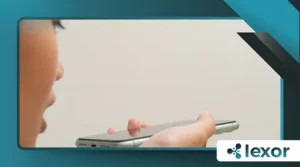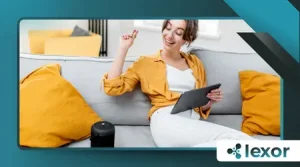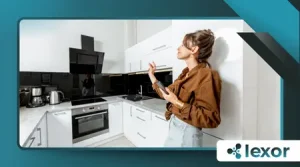Voice, Gesture & Spatial Commands: The Next Frontier for Smart Homes

Voice, Gesture & Spatial Commands represent the definitive evolution in how we interact with our connected living spaces.
The current state of smart home technology, while convenient, often feels like a collection of separate silos.
We issue a verbal command to a speaker, tap an app on our phone, or flick a physical switch.
However, 2025 is ushering in a transformative era where our homes proactively understand and respond to natural human cues, moving beyond mere reactive interfaces.
This is not just an upgrade; it is a fundamental shift toward an ambient, truly intuitive digital dwelling.
The fragmented experience of managing multiple devices is finally giving way to cohesive, seamless operation that mirrors our real-world behavior.
Why is Multimodal Interaction Essential for the Future of Smart Homes?

The single-mode control paradigm has limitations that restrict the potential of home automation. Voice is fantastic, yet it is often intrusive in shared spaces or fails in noisy environments.
Tapping a screen requires you to have a device on hand, breaking the flow of natural movement.
These frictions are minor annoyances, but they cumulatively prevent the ‘smart’ home from feeling genuinely intelligent and integrated.
A truly smart environment must adapt to us, not the other way around. Blending modalities like voice, gesture, and a keen awareness of spatial context creates a fault-tolerant, richer user experience.
Imagine a user walking into the kitchen with hands full of groceries. Issuing a voice command is impossible.
However, a quick, almost imperceptible wave—a simple gesture—can trigger the kitchen lights to illuminate and the pantry door to unlock.
That is the power of true multimodal design. It acknowledges that human interaction is inherently diverse.
++How to Spot a Legit Blockchain Project
Furthermore, this diversification of control methods greatly enhances accessibility, making advanced technology universally usable.
| Control Modality | Primary Benefit in Smart Home | Use Case Example |
| Voice Commands | Hands-Free Convenience & Speed | “Lower the thermostat by three degrees.” |
| Gesture Control | Silent, Contextual, Hygienic | Waving a hand to skip a song on a speaker. |
| Spatial Commands | Proactive, Location-Aware Automation | Lights dimming as you enter the home theater room. |
How Does Spatial Computing Elevate Smart Home Automation?

Spatial computing is the foundational technology that gives the smart home a sense of where you are and what you are doing.
It maps and understands the physical environment in real-time, essentially giving the home a digital brain that perceives physical space.
++How Thread 1.4 and Matter Updates Are Unifying Smart Home Networks
This awareness is the difference between a system that waits for a command and one that anticipates your needs. It transitions the smart home from a command center to an intelligent partner in daily life.
Consider a scenario where the system uses spatial awareness to know you are standing at the front door, looking at your smart lock display.
The system doesn’t need you to say, “Unlock the door.” Instead, it displays the virtual unlock button, which you then activate with a simple, subtle hand gesture, or perhaps even a focused gaze.
Read more: Smart Home Automation for Energy Independence
This integration of environmental awareness makes the interface virtually invisible.
Voice, Gesture & Spatial Commands: What Does This Look Like in Practice?
The fusion of these control methods unlocks an unprecedented level of personalized automation. For example, a homeowner could enter their living room.
Based on their location and the time of day—a spatial command—the blinds automatically adjust to reduce afternoon glare.
++Smart Homes in 2025: AI Integration Transcends Convenience to Create Intuitive Living Environments
Then, they quietly make a specific hand motion toward the media center—a gesture command—to activate the TV.
Finally, they use a voice command—”Play the new action movie trailer”—to select content. This fluid progression feels natural and unforced.
This integrated approach is like moving from controlling a complex machine with dozens of levers to driving a car with a self-learning co-pilot.
The user’s effort is minimized, and the interaction becomes a subconscious part of the daily routine. The smart home should be a stage for life, not an object to be constantly managed.
What is the Impact of This Multimodal Shift on the Market?
The shift to multimodal control is driving significant innovation in the sensor and processing hardware space. Systems must now process visual, audio, and positional data simultaneously and accurately.
This increased capability fuels market growth dramatically.
According to a report by Grand View Research, the global gesture recognition market, a key component of this trend, is projected to grow substantially, with a Compound Annual Growth Rate (CAGR) of 19.04% from 2025 to 2034.
This statistic underscores the massive industry confidence in non-voice interfaces becoming mainstream.
The underlying AI must be robust enough to handle the ambiguities of human communication. It must differentiate between a casual wave and a “turn off the lights” gesture.
It must understand the difference between someone talking to the assistant and two people talking near the assistant.
This sophistication is being achieved through edge computing, where processing is performed locally, enhancing speed and protecting privacy—a non-negotiable feature for modern homeowners.
We are leaving behind the era of single-word commands and embracing contextual understanding.
This deeper level of comprehension enables the system to manage complex, multi-step actions effortlessly.
For example, with Voice, Gesture & Spatial Commands, one can point to a group of smart bulbs and say, “Make those ones warmer.”
The system processes the gesture (the ‘ones’), the voice (the action and attribute), and the spatial data (the precise location of the bulbs and the user) to execute the command instantly and accurately.
Why should our homes not speak our body language?
The Promise of Truly Intuitive Living: Voice, Gesture & Spatial Commands
The convergence of Voice, Gesture & Spatial Commands will redefine what we call ‘convenience’ in our homes.
It shifts the burden of adaptation from the user to the technology. This is the promise of truly ambient intelligence—technology that disappears into the fabric of our lives.
The future home won’t just react; it will intuit, assist, and augment our living experience in ways we are only now beginning to fully grasp.
The next step is a home that anticipates your mood and adjusts the environment before you realize you need it. That is the undeniable direction of smart living.
Voice, Gesture & Spatial Commands: Conclusion
The future of the smart home is undeniably multimodal, leveraging the powerful triumvirate of Voice, Gesture & Spatial Commands.
By moving beyond simple triggers to complex, contextual awareness, smart homes are evolving into truly intelligent, responsive environments.
This seamless fusion of control methods eliminates friction and makes the technology practically invisible.
This new era of intuitive interaction is not merely an incremental change; it is the essential next phase, delivering on the original promise of a truly smart, human-centric living space.
Frequently Asked Questions
What exactly are Spatial Commands in a smart home?
Spatial Commands refer to the home system using its awareness of the user’s location, movement, and orientation within the house to automatically trigger actions or present interfaces.
It is control based on where you are and how you are positioned, not an explicit verbal or gestural input.
Is Gesture Control hygienic?
Yes, touchless Gesture Control is inherently hygienic because it allows users to interact with devices (like lights or air purifiers) without physically touching surfaces, which is a significant benefit, especially in kitchens or bathrooms.
How does this multimodal approach improve accessibility?
It improves accessibility by offering multiple ways to control the environment. Someone who cannot speak can use gestures, and someone with limited mobility can use voice, ensuring that the smart home remains fully functional and inclusive for all occupants.
